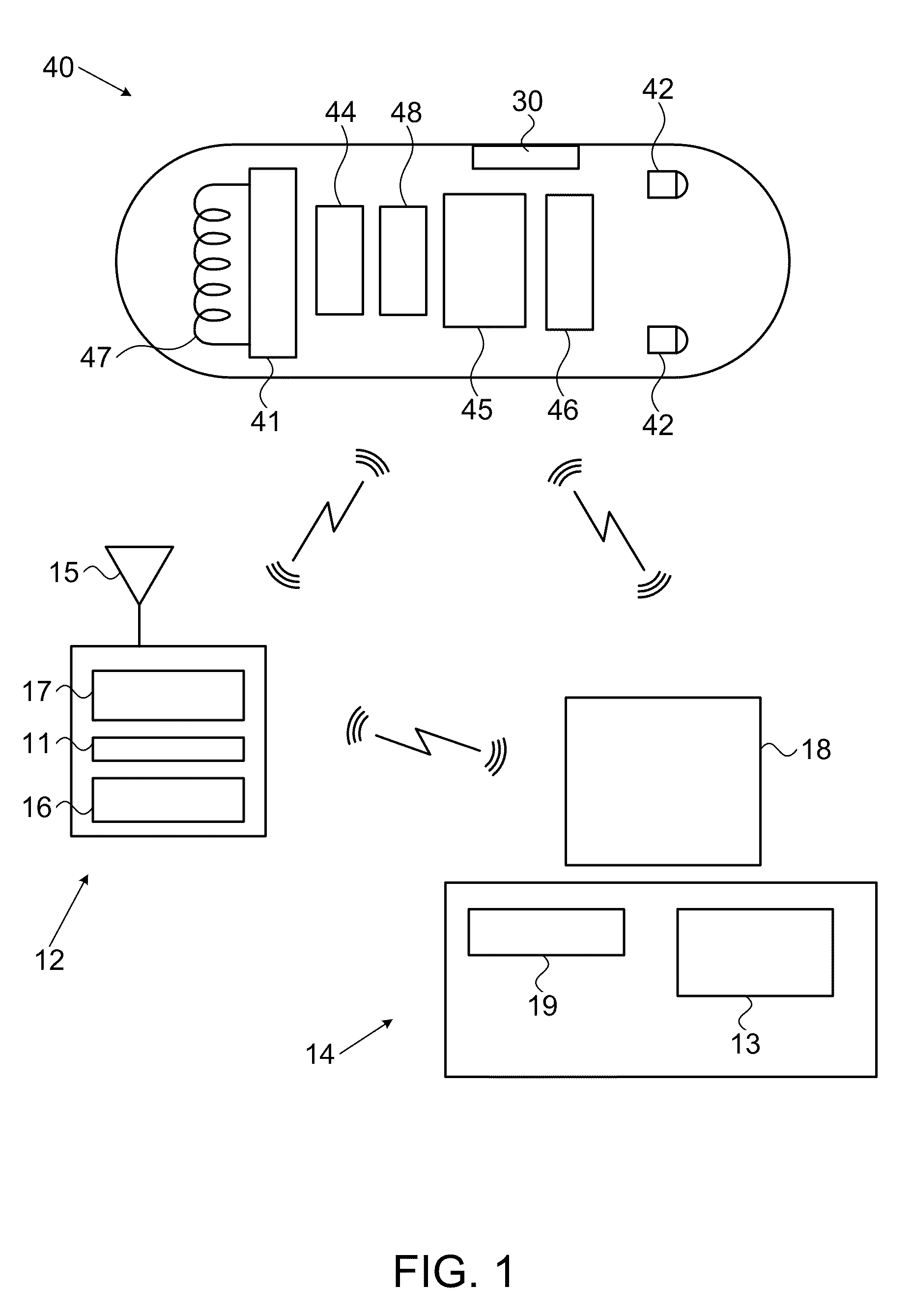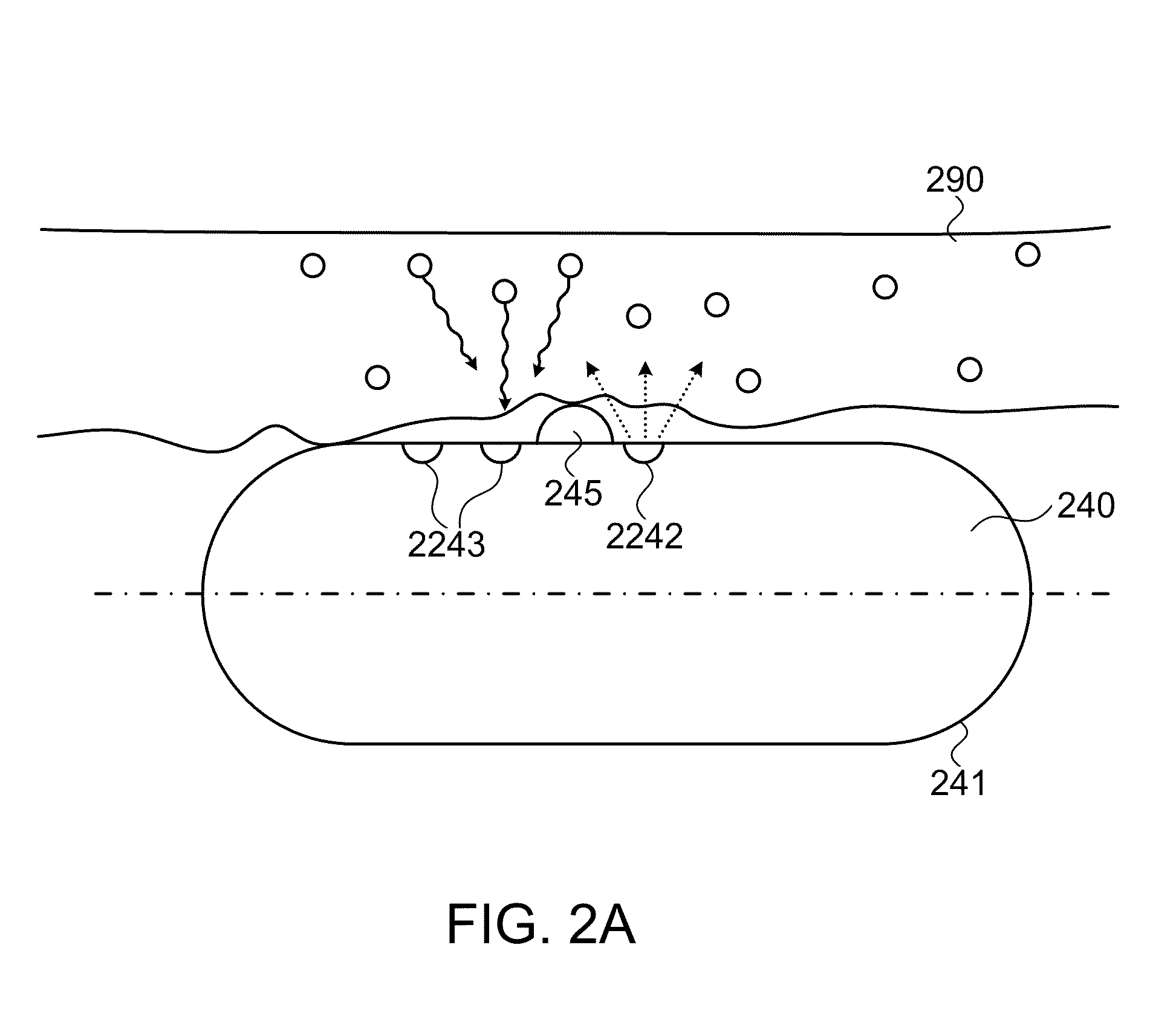Device and method for in vivo imaging
a technology of in vivo imaging and lumen, which is applied in the field of in vivo devices and methods for imaging in vivo lumens, can solve the problems of complex viewing and detection of pathologies in the gi tract, such as tumors, lesions, ulcers, etc., and achieves the effects of high resolution, energy saving and improved imaging
- Summary
- Abstract
- Description
- Claims
- Application Information
AI Technical Summary
Benefits of technology
Problems solved by technology
Method used
Image
Examples
Embodiment Construction
[0026]In the following description, various aspects of the present invention will be described. For purposes of explanation, specific configurations and details are set forth in order to provide a thorough understanding of the present invention. However, it will also be apparent to one skilled in the art that the present invention may be practiced without the specific details presented herein. Furthermore, well-known features may be omitted or simplified in order not to obscure the present invention.
[0027]Reference is made to FIG. 1, which shows a schematic diagram of an in-vivo imaging system according to an embodiment of the present invention. Typically, the in-vivo imaging system may include an in-vivo imaging device 40, an external receiving device and / or recording device 12, e.g., data receiver, and a workstation 14. The in-vivo imaging device 40 may have an imager 46 for capturing image frames or a stream of image frames, an illumination source 42 for illuminating the body lum...
PUM
 Login to View More
Login to View More Abstract
Description
Claims
Application Information
 Login to View More
Login to View More - R&D
- Intellectual Property
- Life Sciences
- Materials
- Tech Scout
- Unparalleled Data Quality
- Higher Quality Content
- 60% Fewer Hallucinations
Browse by: Latest US Patents, China's latest patents, Technical Efficacy Thesaurus, Application Domain, Technology Topic, Popular Technical Reports.
© 2025 PatSnap. All rights reserved.Legal|Privacy policy|Modern Slavery Act Transparency Statement|Sitemap|About US| Contact US: help@patsnap.com



